A Monster Born of Dust and Defiance, Carrying the Mad Courage of Those Who Try to Leave Their Names Etched in a Desert That Erases Everything
If you want to understand what happens when human stubbornness, engineering masochism, and a mild obsession with suffering for sport converge into a single mechanical organism, you need not go to Le Mans, nor Spa, nor anything as sanitized as modern Formula One. You go to the desert—where rocks slice tyres like fruit, dunes move nightly just to ruin your day, and temperatures swing so violently that even steel panels start questioning their life choices. And once you step into this world of cosmic cruelty, you inevitably meet the one machine that has, over the years, become as familiar with success as it is with pain: the John Cooper Works Buggy of the X-raid MINI JCW Team.
.webp)
This is no “MINI” in the sense your neighbour Karen drives. This is MINI in the sense that a Bengal tiger is still technically a cat. You do not pet it. You do not talk gently to it. You strap in, pray to whatever desert deity you believe in, and hope the dunes allow your passage today.
.webp)
It’s a machine built on a philosophy that goes back decades—to John Cooper himself, and later to Sven Quandt, the man behind X-raid—who seems to treat the Dakar Rally not as a race but as a personal chess match against nature. Quandt has the manner of a man who has spent too long in rally raids: slightly sunburned, eyes like they’re permanently looking at the horizon, and an odd calmness about disaster, as though “the gearbox exploded” is just another Tuesday.
.webp)
He assembled engineers who share this appetite for voluntary torment. They operate in a world where “it’ll break” isn’t a hypothetical but the founding premise. They know the desert will win eventually. It’s only a matter of when. And so they design a machine whose existence is predicated on delaying that defeat for as long as possible.
.webp)
Enter the JCW Buggy: rear-wheel drive, long-travel suspension, a twin-turbo diesel powerplant tuned not for elegance but for brute survival, and bodywork that looks like it was shaped by angry winds.
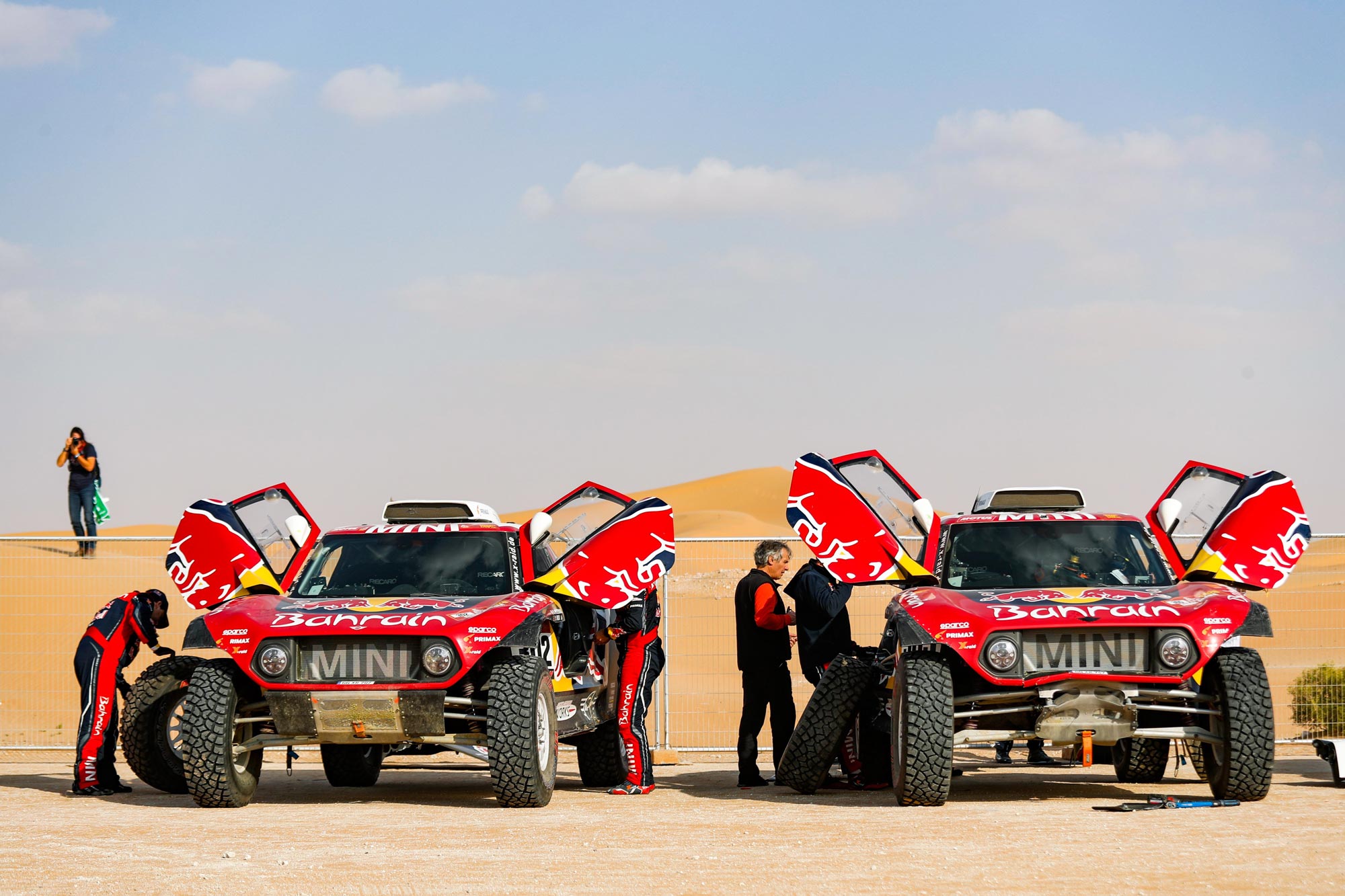
It is, in effect, the automotive equivalent of a middleweight boxer who has decided that dodging punches is overrated and instead chooses to be made of granite.
The first thing you notice about the JCW Buggy is that it doesn’t look like anything that belongs on modern roads. It looks like something that escaped from a secret shed in Bavaria. Everything is tucked in, compact, but blooming outward in the middle like a defensive animal curling around its vital organs. The surfaces are taught, muscular, deliberate.
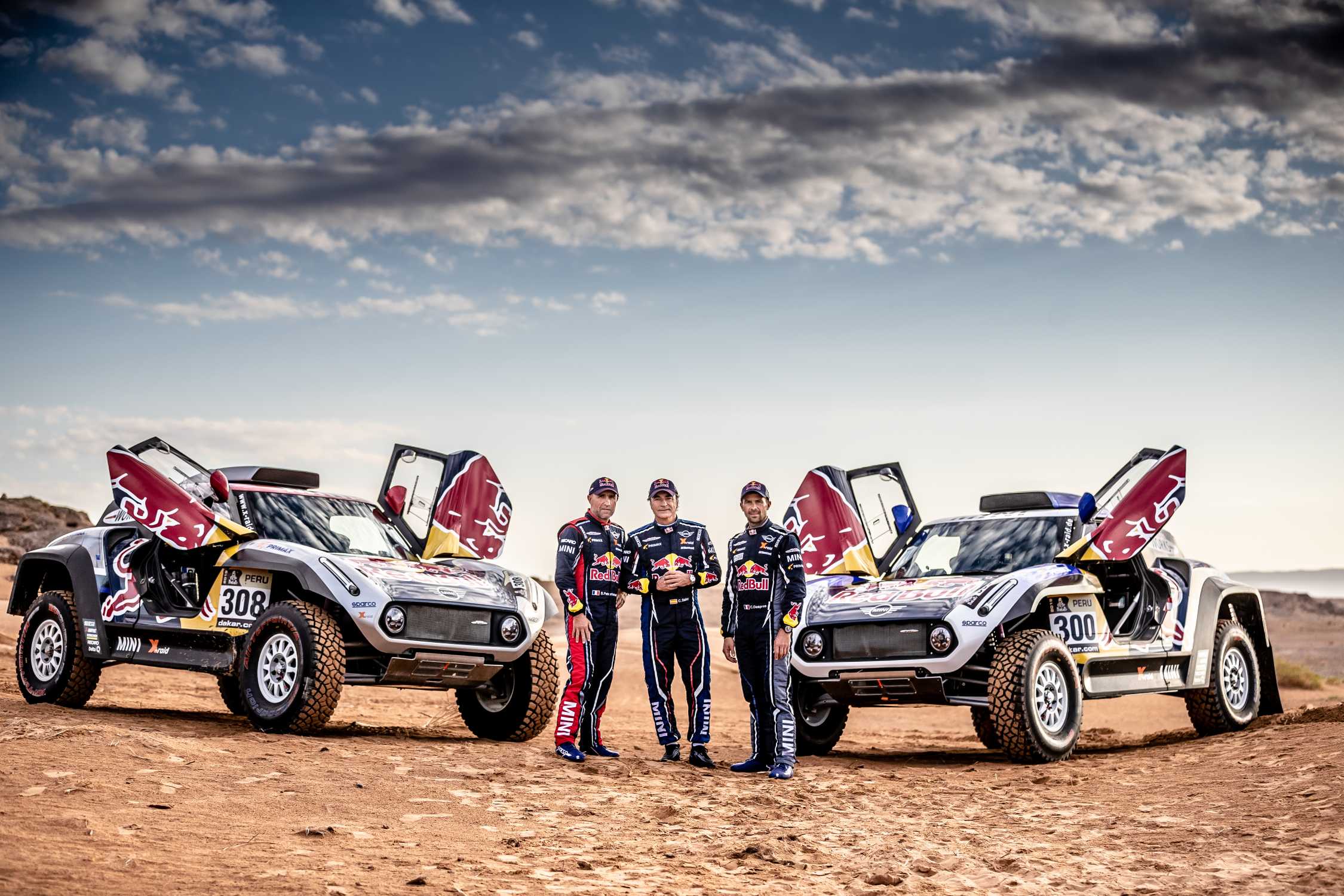
But there is method here.
The high nose prevents dune-diving. The long belly ensures it floats over crests. The broad stance keeps it upright while executing high-speed drifts on loose surfaces that would send normal SUVs into emotional breakdown. And the rear-drive layout, required by cross-country rally regulations, allows for massive wheel travel and reduced weight over the driven axle—turning climbs that look impossible into mere nuisances.
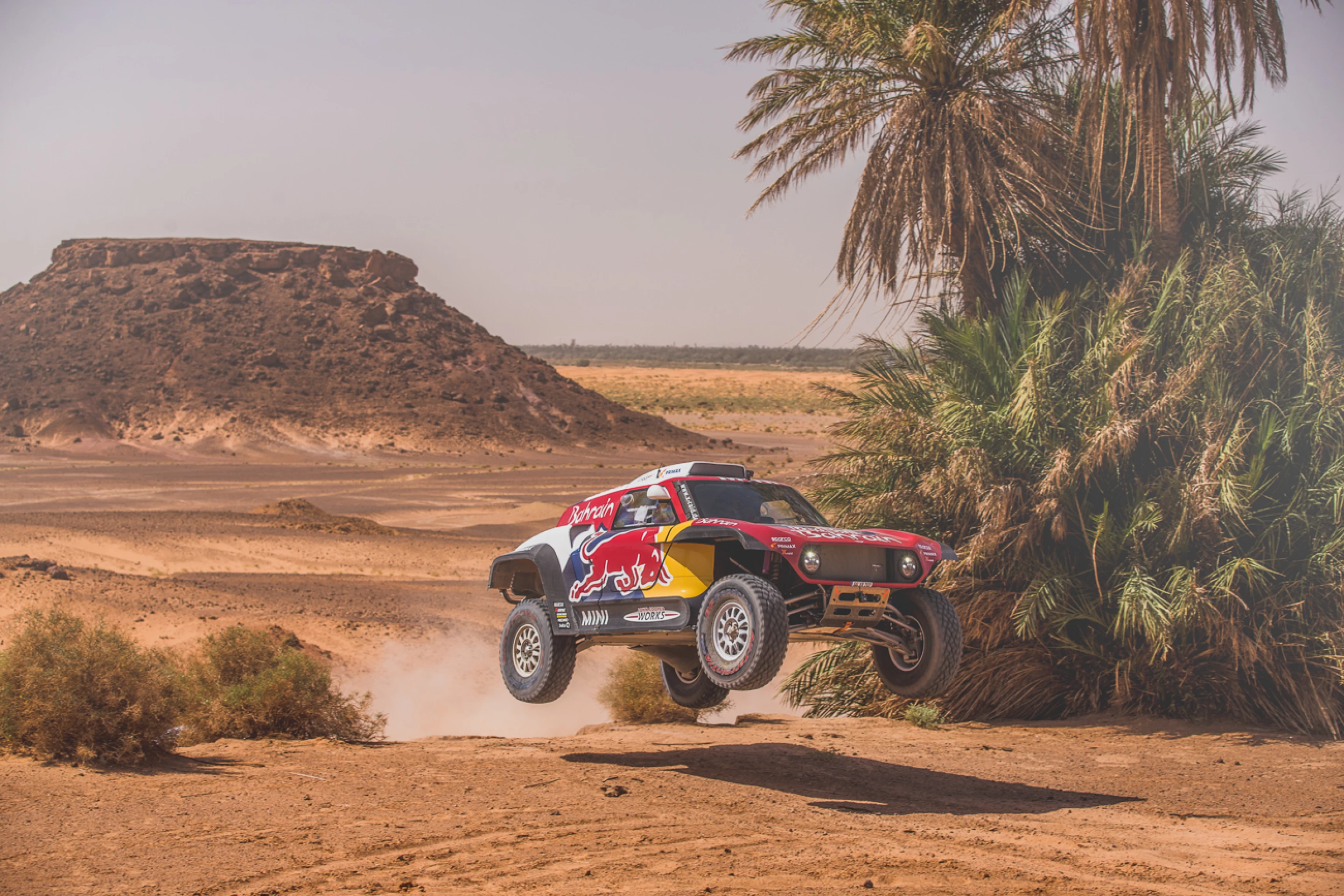
You see, in Dakar, aerodynamics don’t matter as much as surviving rock impacts at 170 km/h. The Buggy is essentially a rolling exoskeleton wrapped in carbon fibre panels designed to sacrifice themselves in honourable death so that the chassis may live another day.

The engineers know this. They send drivers out with crates of spare panels as if handing snacks for recess.
Once you climb inside—ideally with a rope, or a small ladder—you discover an interior that resembles a submarine built by people who have never heard of comfort.

Thick racing seats.
Navigation screens the size of school textbooks.
Buttons that could launch drones.
A cage structure that's welded with a level of seriousness normally reserved for spacecraft.

There's no leather. No stitching. No trim pieces meant to impress. Everything exists because otherwise the occupants will die, and even then it’s a coin flip.
Co-drivers—those poor creatures—face a console that looks like the cockpit of a Cold War bomber. They must interpret roadbooks and GPS cues while being violently thrown around like a sock in a washing machine. They do this for more than ten hours a day. For two weeks.
This is not cycling. This is survival with a stopwatch.
Under the Buggy’s bonnet hides a 3.0-litre twin-turbo BMW diesel engine—because nothing else has the torque or the reliability to endure the desert’s creative ways of saying “no.”
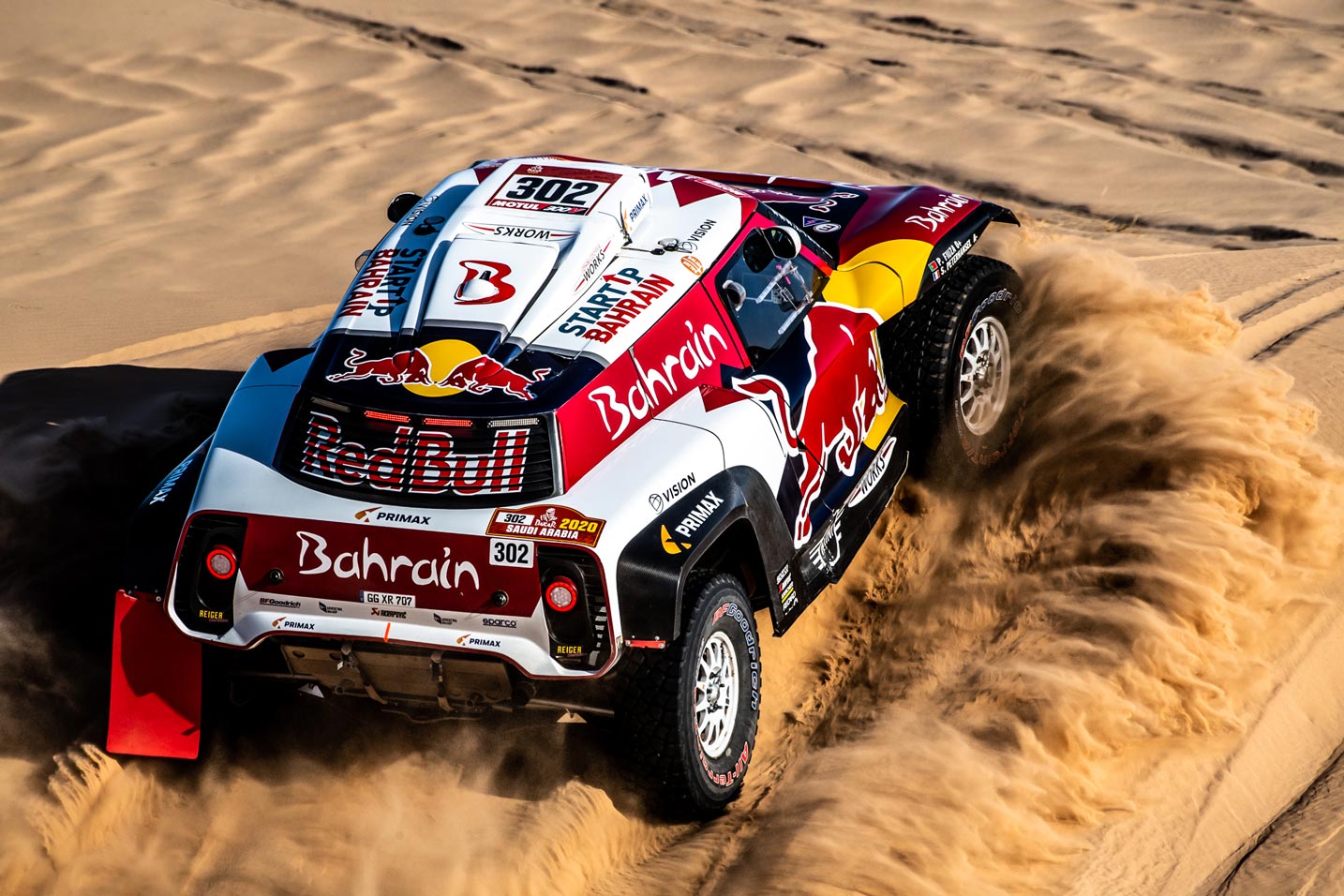
This engine is not romantic. It does not sing. It does not elevate your soul. It grunts, roars, and occasionally sounds like it’s clearing its throat after inhaling too much sand.
But while petrol engines panic in heat, gasping like Victorian children, diesels thrive. They give torque in amounts that feel almost undignified. They pull the Buggy up dunes with the inevitability of tax season.
And because power alone isn’t enough, the engine is mounted mid-front, pushed rearward into the chassis so that weight distribution becomes a quietly brilliant weapon. Not balanced like a ballet dancer—balanced like a sumo wrestler positioning himself at the exact angle to destroy you.
If there’s one thing rally-raid vehicles understand better than anything else, it’s that suspension is everything. Engines can be powerful, yes. Chassis can be strong. But if your dampers are rubbish, your rally is over before the first waypoint.

And so the JCW Buggy’s suspension is nothing short of witchcraft. Long wishbones stretch out like skeletal wings. Dampers the size of fire extinguishers gulp heat and shock like kamikaze heroes. Each wheel travels enough vertical distance to climb a small curb without the body noticing.
When you watch the Buggy from afar, the wheels seem to live in their own universe—independent, chaotic, but somehow synchronized. The body glides forward, almost serene, while the wheels below fight their private war against physics.
It is hypnotic. Violent, yes, but hypnotic.
Over the years, the JCW Buggy has been handled by gladiators like Carlos Sainz Sr., Stéphane Peterhansel, and Nasser Al-Attiyah—drivers for whom the desert is not a location but a familiar old enemy.
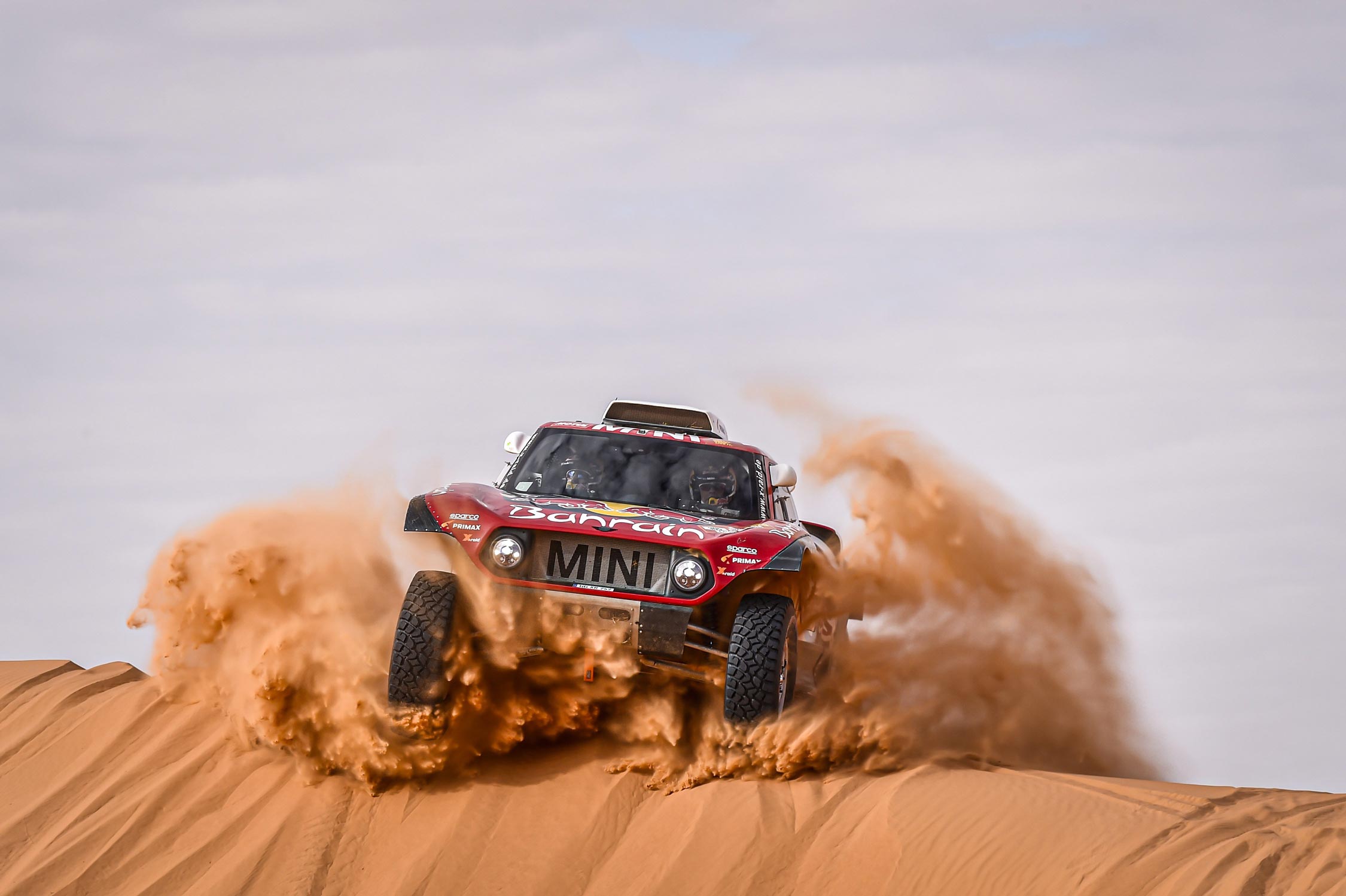
Sainz, known as “El Matador,” drives with the intensity of a man trying to outrun time itself. Peterhansel—Monsieur Dakar—moves through dunes with eerie calm, reading terrain the way chess masters read boards. Al-Attiyah, when he piloted X-raid machinery, drove like the sand owed him money.

All these men had something in common: a willingness to throw a 2-ton diesel monster into situations that would make the rest of us fill out our wills.
Their victories—numerous, significant—are not accidents. They’re testaments to a strange symbiosis between man and machine, forged in exhaustion, discipline, and dust that clings to every pore for weeks.
Dakar Rally isn’t really a race anymore; it’s a pilgrimage. A pilgrimage of engines, bones, and egos being tested beyond what polite society considers reasonable.
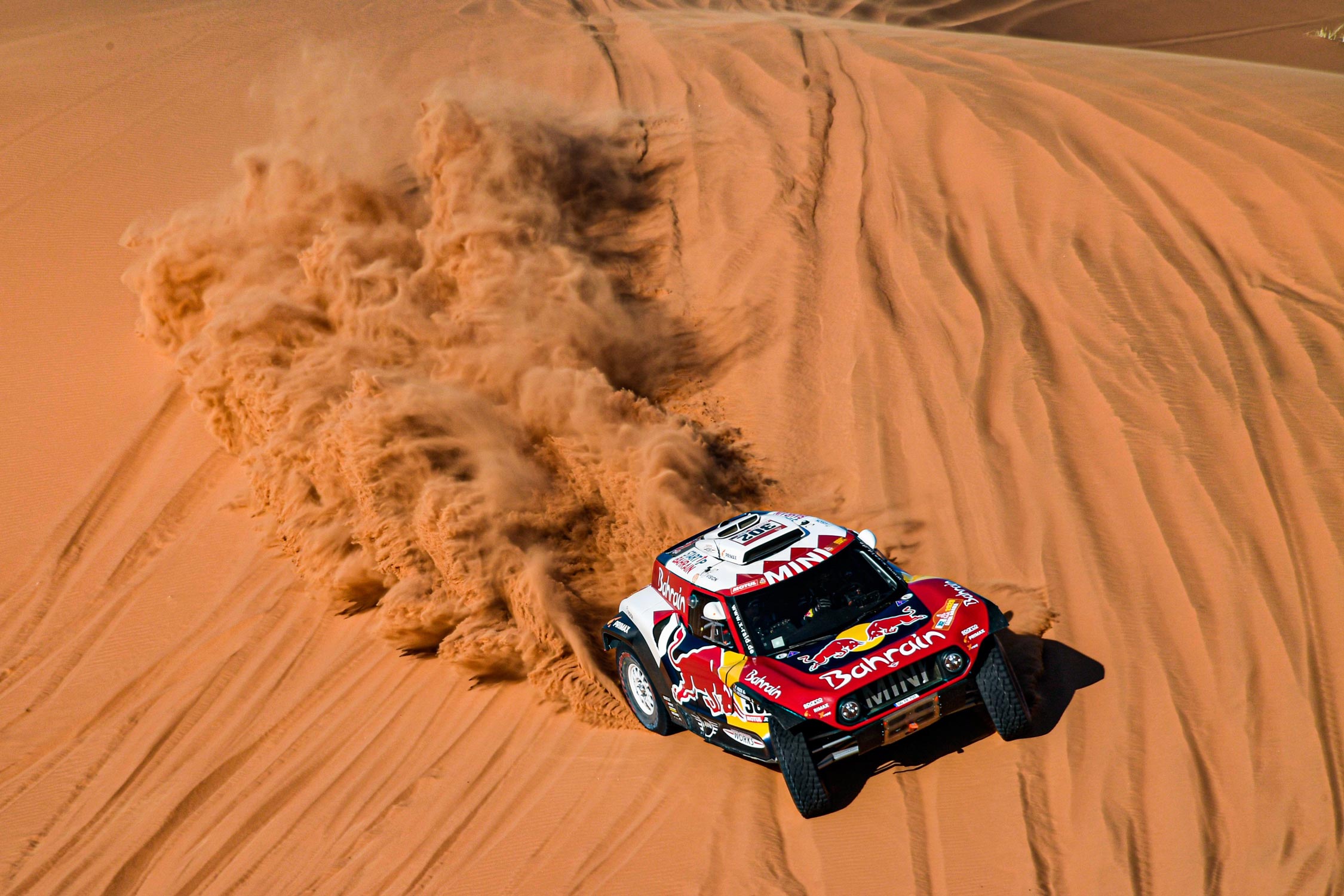
And this is where the JCW Buggy shines.
It understands Dakar the way a veteran soldier understands battlefields—not through theory, but through scars. Every panel is shaped by past failures. Every weld exists because something broke there once. Every piece of the Buggy is an apology to problems that almost ended a rally.
Sven Quandt and his crew treat Dakar not as a sport, but as a laboratory. They study failure like a religion. They catalogue broken parts with the same enthusiasm Victorian explorers catalogued insects.

And over time, the Buggy evolved—becoming faster, stronger, more ruthless in the face of heat, sand, wind, rocks, riverbeds, and the occasional angry camel.
This is why it wins.
This is why it returns every year.
This is why its legacy is both romantic and brutal.
It is engineering purified by suffering.
Now, what of collecting such a machine? You can’t exactly drive it to church. You can’t park it underground in Singapore without scraping the ceiling. And road legality is about as plausible as teaching a lion to do taxes.
Yet, collectors adore them. Not many exist. Those that do are pieces of motorsport folklore—rolling evidence of human perseverance.
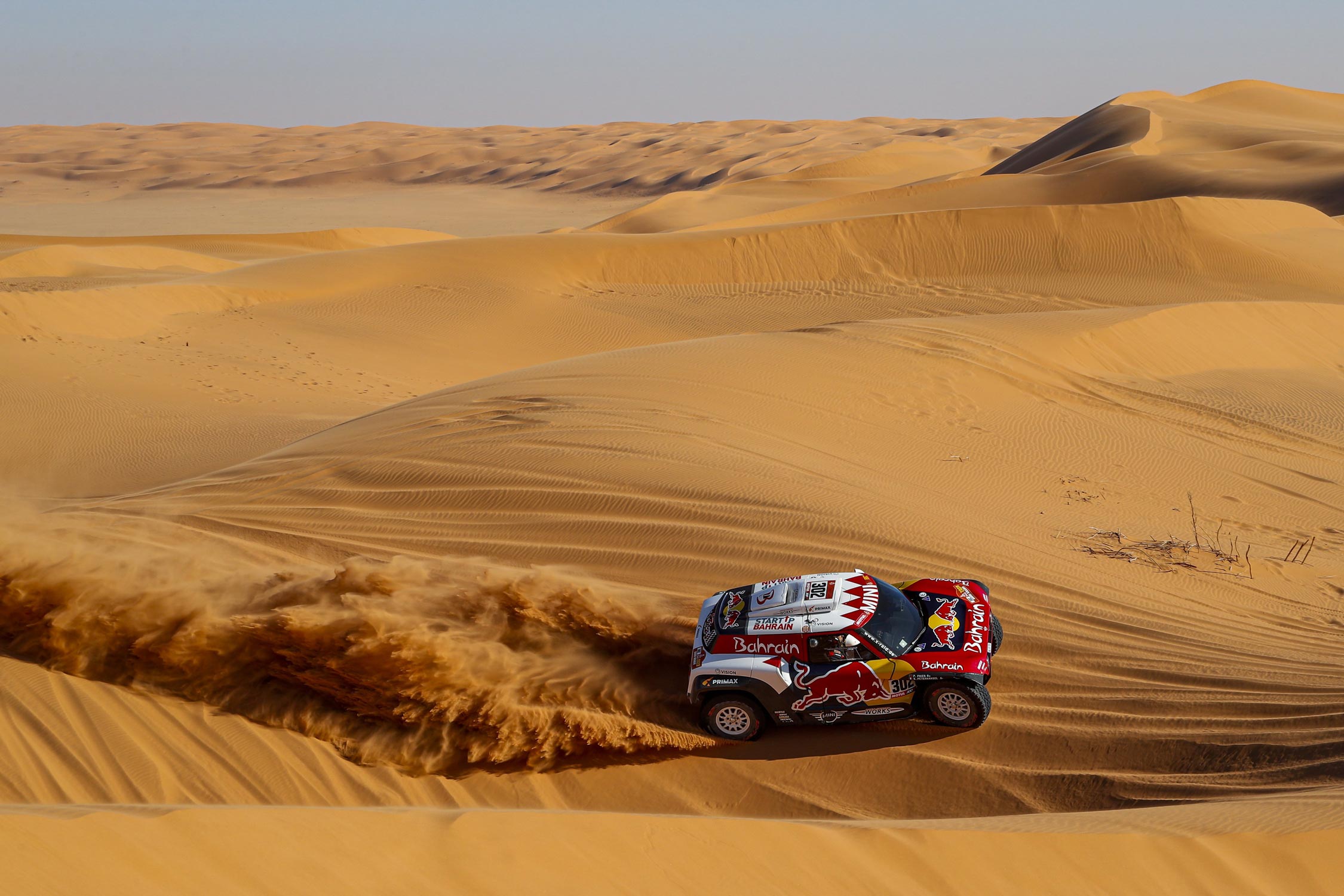
Owning a JCW Buggy is like owning a piece of the moon. It's not practical, not subtle, and absolutely not sensible. But it represents something nearly extinct in modern motoring: purpose-built machinery that cares nothing for comfort or aesthetics. A machine that exists solely to kill distance and survive landscapes that kill lesser machines.
It is, unquestionably, a future museum piece. A symbol of when humans still dared to challenge elements instead of simulating them on computers.
The John Cooper Works Buggy is many things: monstrous, unforgiving, magnificent, unhinged, glorious. But above all, it is honest.

It doesn’t pretend to be luxurious.
It doesn’t whisper promises of comfort.
It doesn’t flatter you with easy horsepower.
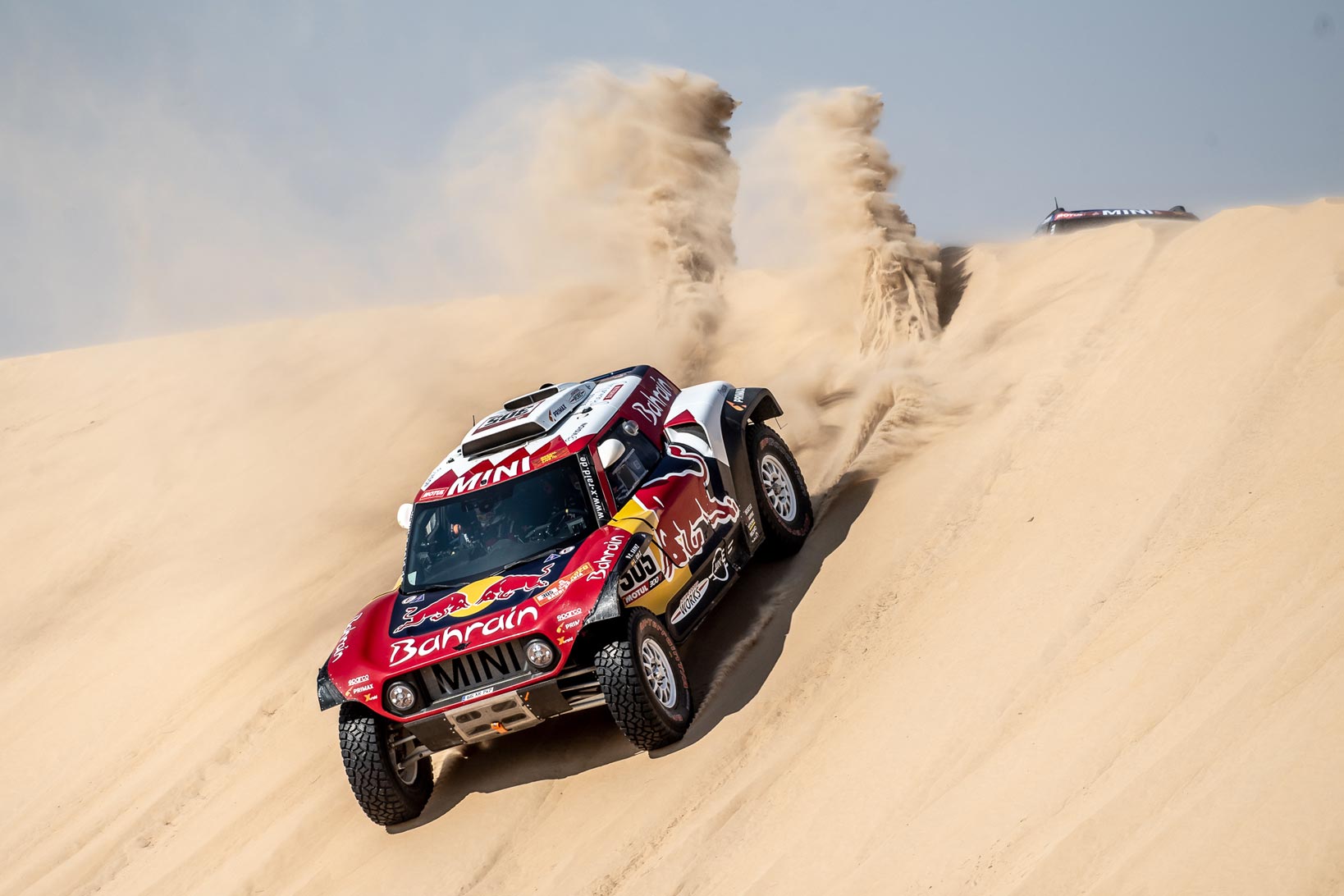
It simply asks one question:
“Do you have the courage to face the desert with me?”

And for those who answer yes, it rewards them with stories no sports car, no hypercar, no sanitized track machine could ever offer.
Out there, far from cities and circuits, the Buggy writes legends into sand—knowing the wind will erase them tomorrow.
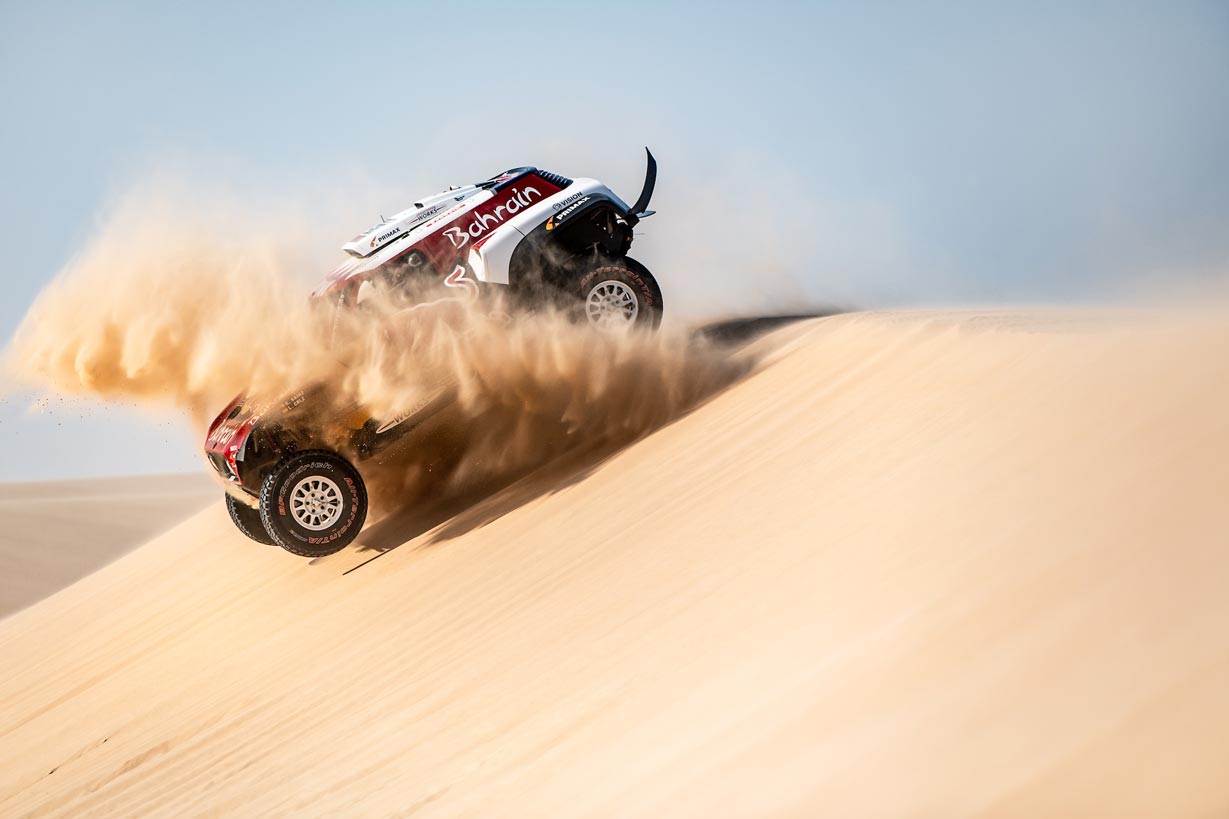
That’s the poetry of it.
Temporary victories, immortal memories.

Because deserts forget everything.
But the world never forgets what conquers them.